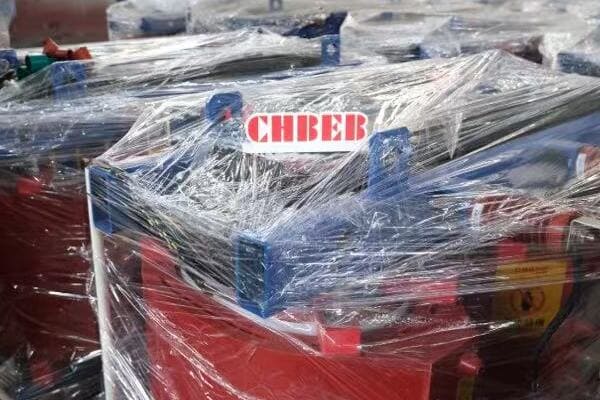Transformer Purpose in Different Regions: Why North America and Asia Have Distinct Requirements?
Are you struggling to understand why transformers designed for North America don’t always work in Asia, or vice versa? This regional difference in transformer requirements can be a major headache for manufacturers and buyers alike. But what exactly causes these distinctions, and how can you navigate them effectively?
Transformer design requirements differ across regions due to variations in voltage standards, grid structure, and environmental conditions. Understanding these differences is crucial for selecting or exporting the right transformer for each market.
In this article, I’ll explain the key differences in transformer requirements between North America and Asia. We’ll explore the reasons behind these distinctions, compare specifications, and look at strategies for adapting designs for global export. Whether you’re a manufacturer looking to expand your market or a buyer sourcing transformers internationally, this guide will help you navigate the complex world of regional transformer requirements.
Overview: Why Regional Differences Matter in Transformer Design?
Have you ever wondered why a transformer that works perfectly in one country might fail to meet standards in another? The answer lies in the significant regional differences in transformer requirements. But why are these differences so important, and how do they impact transformer design and functionality?
Regional differences in transformer design are crucial because they reflect varying electrical systems, environmental conditions, and regulatory standards across different parts of the world. These distinctions affect everything from voltage levels and frequency to insulation requirements and safety features, making a one-size-fits-all approach impractical for global transformer manufacturing and deployment.
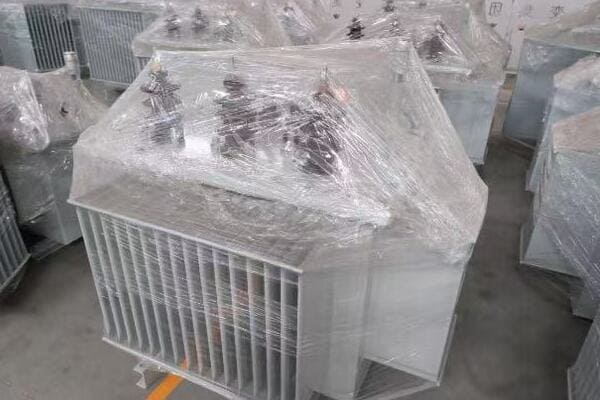
Understanding the Importance of Regional Variations in Transformer Design
Regional differences in transformer design matter because they directly impact the safety, efficiency, and reliability of power distribution systems. Transformers designed without considering these regional variations may underperform, fail prematurely, or even pose safety risks. Understanding and addressing these differences is essential for manufacturers aiming to serve global markets and for users seeking to implement the most suitable and cost-effective transformer solutions.
Let’s delve deeper into why these regional differences are so significant:
1. Electrical System Characteristics
Different regions have:
- Varying standard voltage levels
- Different power frequencies (50 Hz vs 60 Hz)
- Unique grid configurations and load profiles
I once worked on a project where a European manufacturer tried to sell their transformers in North America without proper adaptation. The difference in power frequency alone caused significant issues with core losses and efficiency, leading to costly redesigns.
2. Environmental Factors
Regional considerations include:
- Climate conditions (temperature extremes, humidity)
- Natural disaster risks (earthquakes, hurricanes)
- Pollution levels and corrosive environments
3. Regulatory Standards
Each region has:
- Specific safety standards and certifications
- Efficiency requirements and energy regulations
- Environmental and noise pollution guidelines
4. Market Preferences and Economic Factors
Regional variations in:
- Cost sensitivity vs performance priorities
- Size and weight constraints
- Maintenance practices and lifecycle expectations
Here’s a table summarizing key regional factors affecting transformer design:
| Factor | North America | Asia |
|---|---|---|
| Power Frequency | 60 Hz | 50 Hz (most countries) |
| Voltage Standards | ANSI/IEEE | IEC (generally) |
| Environmental Focus | Extreme weather resilience | Compact design for urban areas |
| Regulatory Emphasis | Safety and reliability | Efficiency and cost-effectiveness |
| Market Preference | Overload capacity | Energy savings |
In my experience, the impact of these regional differences can be profound. I recall a project where we were adapting a transformer design from China for use in Canada. The original design, while highly efficient, didn’t meet North American safety standards for fire resistance and short-circuit withstand capability. We had to completely redesign the insulation system and reinforce the mechanical structure, significantly altering the cost and performance characteristics of the transformer.
The difference in power frequencies between regions is particularly challenging. In a recent project, we were helping a U.S. manufacturer export transformers to India. The change from 60 Hz to 50 Hz operation required a complete recalculation of the core design to avoid excessive losses and potential overheating. This seemingly small difference in frequency had major implications for the transformer’s efficiency and lifespan.
Environmental factors can also necessitate significant design changes. I worked on a transformer project for a coastal installation in Southeast Asia. The high humidity and salt-laden air required us to use special corrosion-resistant materials and enhanced sealing techniques that weren’t necessary for the same transformer model sold in drier, inland regions of North America.
Regulatory differences can be especially tricky to navigate. In a recent project involving the export of transformers from Europe to the United States, we had to deal with the differing approaches to efficiency standards. While the European design easily met IEC efficiency standards, it fell short of the U.S. Department of Energy’s more stringent requirements. This necessitated a redesign of the core and windings, impacting both the cost and the physical dimensions of the transformer.
Market preferences and economic factors also play a crucial role. In many Asian markets, there’s a strong emphasis on initial cost and space efficiency, leading to designs that prioritize compact size and lower upfront pricing. In contrast, North American buyers often focus more on long-term reliability and total cost of ownership, preferring designs with higher overload capacity and easier maintenance access, even if they’re physically larger or more expensive initially.
The challenge of harmonizing standards globally is ongoing. I’m currently involved in an international working group aimed at developing more unified transformer standards. While progress is being made, the deep-rooted regional differences in electrical systems and regulatory approaches make complete harmonization a distant goal. For now, understanding and adapting to these regional differences remains crucial for success in the global transformer market.
Understanding why regional differences matter in transformer design is essential for anyone involved in the international power industry. These variations are not just bureaucratic hurdles; they reflect real differences in electrical systems, environmental conditions, and market needs across different parts of the world. By recognizing and addressing these regional requirements, manufacturers can develop more versatile and competitive products, while users can ensure they’re getting transformers that are truly fit for purpose in their specific location and application.
Key Requirements for Transformers in North America?
Are you planning to manufacture or purchase transformers for the North American market? Understanding the unique requirements for this region is crucial for success. But what exactly sets North American transformer standards apart from the rest of the world?
**Key requirements for transformers in North America include:
- Compliance with ANSI/IEEE standards
- 60 Hz frequency operation
- Higher emphasis on safety features and overload capacity
- Stringent efficiency standards set by DOE
- Specific voltage ratings (e.g., 480V common in distribution)
- Robust design for extreme weather conditions
- UL listing for many applications**
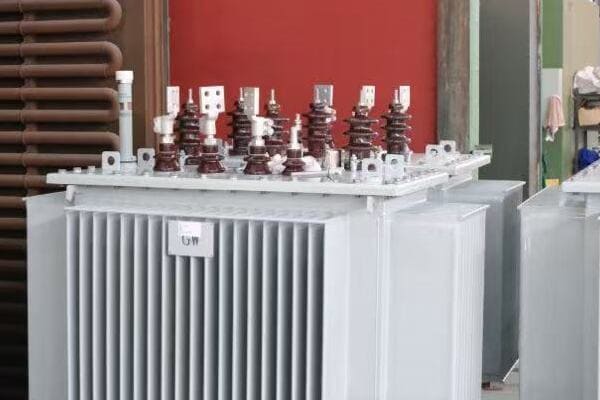
Diving Deeper into North American Transformer Requirements
Let’s explore these requirements in more detail:
1. Standards Compliance
North American transformers must adhere to:
- ANSI/IEEE C57 series standards
- NEMA standards for specific applications
- NEC (National Electrical Code) requirements
I once worked on a project where a European manufacturer tried to enter the U.S. market without fully understanding these standards. Their transformers, while high-quality, didn’t meet specific ANSI requirements for short-circuit withstand capability. The entire product line had to be redesigned, causing significant delays and costs.
2. Frequency and Voltage Considerations
Key electrical parameters include:
- 60 Hz frequency operation
- Common voltage ratings: 480V, 208Y/120V for low voltage; 13.8kV, 34.5kV for medium voltage
3. Safety and Reliability Focus
North American designs prioritize:
- Higher basic impulse level (BIL) ratings
- Increased overload capacity
- Enhanced short-circuit withstand capability
4. Efficiency Standards
Transformers must meet:
- Department of Energy (DOE) efficiency regulations
- NEMA Premium® efficiency levels for some applications
Here’s a table summarizing key North American transformer specifications:
| Aspect | Specification | Notes |
|---|---|---|
| Frequency | 60 Hz | Affects core design and losses |
| Low Voltage Common Rating | 480V | Standard for industrial applications |
| Medium Voltage Common Rating | 13.8kV | Widely used in distribution |
| Efficiency Standard | DOE 2016 or later | More stringent than many global standards |
| Safety Standard | UL 1562 (Dry-type) | Required for many installations |
| Overload Capacity | Often designed for 150% | Higher than many global designs |
In my experience, the emphasis on safety and reliability in North American transformer requirements can lead to designs that seem overbuilt by global standards. I recall a project where we were adapting an Asian transformer design for the U.S. market. The original design, while highly efficient, didn’t meet the higher BIL and short-circuit withstand requirements common in North America. We had to significantly reinforce the mechanical structure and enhance the insulation system, resulting in a larger and more costly transformer.
The 60 Hz frequency standard in North America presents unique challenges when adapting designs from 50 Hz regions. In a recent project, we were helping a manufacturer from China export transformers to Canada. The change from 50 Hz to 60 Hz operation required a complete recalculation of the core design. We found that simply using the same core designed for 50 Hz operation at 60 Hz would result in excessive losses and potential overheating. The redesign process was complex, involving changes to core dimensions, lamination thickness, and winding configurations.
Efficiency standards in North America, particularly those set by the U.S. Department of Energy, are among the most stringent in the world. I worked on a compliance project when the new DOE 2016 standards were introduced. Many transformer designs that were considered highly efficient under previous standards suddenly became obsolete. We had to implement advanced core materials like amorphous metal and redesign windings to meet the new efficiency requirements while still maintaining competitive pricing.
The focus on overload capacity in North American designs is another key differentiator. In a project for a large industrial facility, the client insisted on transformers capable of sustaining 150% load for extended periods. This requirement, common in North America but less so globally, led to a design with larger conductors and enhanced cooling systems. While this increased the initial cost, it provided the operational flexibility and reliability that North American users often expect.
Environmental considerations also play a significant role in North American transformer requirements. I was involved in a project designing transformers for installation in northern Canada. The extreme cold temperatures required special considerations for insulating materials, cooling systems, and even the type of oil used. We had to ensure the transformers could start and operate reliably in temperatures as low as -40°C, a requirement that’s rare in many other parts of the world.
The UL listing requirement for many applications in North America adds another layer of complexity. In a recent project involving the import of transformers from Europe, we found that despite meeting all technical specifications, the lack of UL listing was a major hurdle. The process of obtaining UL certification involved additional testing and documentation, adding time and cost to the project.
Lastly, the growing focus on renewable energy integration and smart grid compatibility is influencing North American transformer requirements. I’m currently working on a project developing transformers for large-scale solar installations in the southwestern United States. These transformers need to handle the unique load profiles of solar generation while also incorporating advanced monitoring and control features for grid integration. This blend of traditional reliability requirements with cutting-edge smart technology is becoming increasingly common in North American specifications.
Understanding the key requirements for transformers in North America is crucial for both manufacturers and users. These requirements reflect the region’s focus on safety, reliability, and efficiency, often resulting in designs that are more robust and sometimes more costly than those in other parts of the world. By carefully considering these requirements, manufacturers can develop products that are truly suited for the North American market, while users can ensure they’re getting transformers that will perform reliably and efficiently in their specific applications.
Key Requirements for Transformers in Asia?
Are you considering entering the Asian transformer market or sourcing transformers from Asia? Understanding the unique requirements for this diverse region is essential for success. But what specific factors set Asian transformer standards apart from those in other parts of the world?
**Key requirements for transformers in Asia include:
- Compliance with IEC standards (in most countries)
- 50 Hz frequency operation (except in some countries like Japan)
- Focus on energy efficiency and compact design
- Adaptation to diverse environmental conditions (from tropical to subarctic)
- Voltage ratings aligned with local grid standards
- Emphasis on cost-effectiveness and value engineering
- Growing demand for smart grid compatibility**
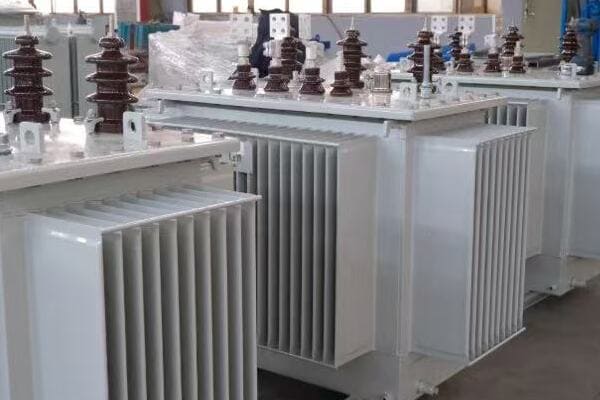
Exploring Asian Transformer Requirements in Detail
Let’s delve deeper into these requirements:
1. Standards Compliance
Most Asian countries follow:
- IEC standards (e.g., IEC 60076 series)
- National standards that often align closely with IEC
I once worked on a project helping a North American manufacturer enter the Indian market. Despite their high-quality products, they had to significantly modify their designs to meet Indian Standard (IS) requirements, which are closely aligned with IEC but have some unique local specifications.
2. Frequency and Voltage Considerations
Key electrical parameters include:
- 50 Hz frequency operation (60 Hz in some countries like Japan, South Korea, and parts of the Philippines)
- Voltage ratings vary by country, but often align with IEC recommendations
3. Efficiency and Size Optimization
Asian markets often prioritize:
- High energy efficiency to meet stringent regulations
- Compact designs for space-constrained urban environments
4. Environmental Adaptability
Transformers must withstand:
- High humidity and temperatures in tropical regions
- Extreme cold in northern areas
- Seismic activity in many parts of Asia
Here’s a table summarizing key Asian transformer specifications:
| Aspect | Specification | Notes |
|---|---|---|
| Frequency | 50 Hz (mostly) | Japan and some others use 60 Hz |
| Standards | IEC-based | With national variations |
| Efficiency Focus | High, often exceeding IEC minimum | Driven by energy costs and regulations |
| Size | Compact designs preferred | Especially in urban areas |
| Environmental | Wide range of conditions | From tropical to subarctic |
| Smart Features | Increasing demand | Particularly in developed Asian markets |
In my experience, the diversity of requirements across different Asian countries can be challenging for manufacturers. I recall a project where we were designing a transformer series for use across Southeast Asia. Despite the geographical proximity of the countries, we had to create multiple variants to meet the specific voltage standards and efficiency requirements of each market. This complexity in the Asian market often necessitates a more flexible and adaptable approach to transformer design.
The focus on energy efficiency in many Asian countries is driving significant innovation in transformer technology. In a recent project in China, we had to meet efficiency standards that were even more stringent than those in Europe or North America. This led us to implement advanced core materials and winding designs that pushed the boundaries of transformer efficiency. The resulting designs, while initially more expensive, provided substantial long-term energy savings that were highly valued in the energy-conscious Chinese market.
Environmental adaptability is a crucial factor in Asian transformer requirements. I worked on a project designing transformers for use in Indonesia, where high humidity, tropical temperatures, and the risk of seismic activity all had to be considered. We implemented special corrosion-resistant materials, enhanced cooling systems, and seismic reinforcement. These adaptations were essential for ensuring reliable operation in the challenging local conditions.
The emphasis on compact design in many Asian markets has led to innovative approaches in transformer construction. In a project for a densely populated urban area in Japan, we had to redesign a standard transformer to fit in a space almost 30% smaller than usual. This required a complete rethink of the core and winding arrangement, as well as the implementation of more efficient cooling methods. The resulting design was not only more compact but also more efficient, showcasing how space constraints can drive technological advancements.
The growing demand for smart grid compatibility is reshaping transformer requirements across Asia. I’m currently involved in a project developing smart transformers for the South Korean market. These units need to incorporate advanced monitoring and control features, allowing for real-time data transmission and remote operation. This trend towards smart functionality is rapidly becoming a standard requirement in many Asian markets, particularly in more developed countries.
Cost-effectiveness remains a key consideration in many Asian markets, but it’s increasingly balanced against performance and lifecycle costs. In a recent project in India, we had to carefully optimize our design to meet strict efficiency standards while keeping the production cost competitive. This led to innovative material choices and manufacturing processes that allowed us to achieve high performance at a reasonable cost.
The rapid growth of renewable energy in countries like China and India is also influencing transformer requirements. I recently worked on a project for large-scale solar installations in western China. The transformers needed to handle the unique load profiles of solar generation while also being able to withstand the harsh desert environment. This combination of electrical performance and environmental resilience presented unique design challenges.
Lastly, the importance of after-sales service and local support cannot be overstated in the Asian market. In many countries, clients expect rapid response times and local expertise. This has led many international manufacturers to establish local service centers and partnerships, a trend I’ve been closely involved with in expanding our company’s presence in Southeast Asia.
Understanding the key requirements for transformers in Asia is crucial for success in this diverse and rapidly evolving market. These requirementsreflect the region’s focus on efficiency, adaptability, and increasingly, smart technology integration. While the diversity of standards and conditions across Asian countries can be challenging, it also presents opportunities for innovation and specialized solutions. By carefully considering these requirements, manufacturers can develop products that are truly suited for the varied Asian markets, while users can ensure they’re getting transformers that will perform reliably and efficiently in their specific applications and environments.
Comparative Table: North America vs Asia Transformer Specifications
| Parameter | North America | Asia |
|---|---|---|
| Frequency | 60Hz | 50Hz |
| Standards | ANSI, IEEE, UL | IEC, GB, IS |
| Common Voltage Classes | 13.2kV, 34.5kV | 11kV, 22kV, 33kV |
| Mounting Preference | Pad-mounted, Substation-type | Pole-mounted, Compact package substations |
| Environmental Focus | Snow resistance, Freeze protection | Moisture protection, Corrosion resistance |
These differences reflect the varying grid structures and standards across regions, which are crucial for exporters and designers to understand.
How to Adapt Your Transformer Design for Global Export?
Are you looking to expand your transformer business globally but feeling overwhelmed by the diverse requirements across regions? Adapting transformer designs for international markets can be challenging, but it’s also a key to unlocking significant growth opportunities. So, how can you effectively modify your designs to meet global standards while maintaining efficiency and cost-effectiveness?
**To adapt transformer designs for global export:
- Develop a modular design approach for easy customization
- Ensure compliance with both IEC and ANSI/IEEE standards
- Design for multi-frequency operation (50/60 Hz)
- Implement flexible insulation systems for various voltage levels
- Optimize for a wide range of environmental conditions
- Incorporate smart features for future-proofing
- Establish partnerships for local certification and support**
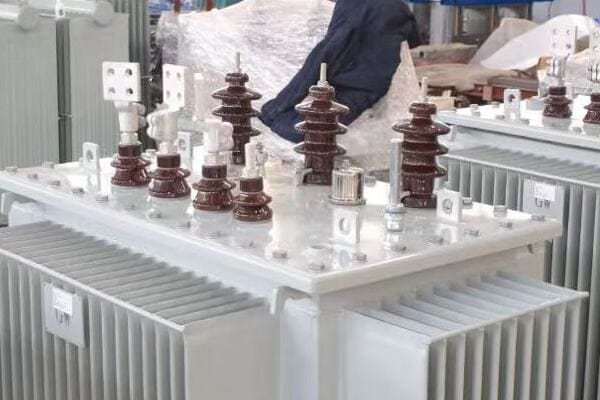
Strategies for Global Transformer Design Adaptation
Let’s explore these adaptation strategies in more detail:
1. Modular Design Approach
Implement:
- Standardized core and winding modules
- Interchangeable components for different standards
- Flexible assembly processes
I once worked on a project where we redesigned our entire transformer line for global adaptability. By creating a set of standardized modules, we could quickly configure transformers for different markets without starting from scratch each time. This approach reduced design time by 40% and significantly improved our responsiveness to international orders.
2. Dual Standard Compliance
Ensure designs meet:
- Both IEC and ANSI/IEEE requirements where possible
- Highest common denominator for safety and performance
3. Multi-Frequency Capability
Design cores and windings for:
- Efficient operation at both 50 Hz and 60 Hz
- Minimal performance variation between frequencies
4. Flexible Insulation Systems
Develop insulation that:
- Meets various BIL requirements
- Adapts to different voltage classes
- Withstands diverse environmental conditions
Here’s a table summarizing key considerations for global transformer design:
| Aspect | Global Design Approach | Benefits |
|---|---|---|
| Core Design | Optimized for both 50/60 Hz | Reduces inventory, improves versatility |
| Winding Configuration | Adaptable for various voltage standards | Enables quick customization |
| Insulation System | Meets highest global standards | Ensures compliance across markets |
| Cooling System | Modular for different climate needs | Adapts to various environmental conditions |
| Monitoring & Control | Incorporates smart features | Future-proofs design for evolving markets |
| Documentation | Comprehensive for multiple standards | Facilitates certification in different regions |
In my experience, creating a truly global transformer design requires a holistic approach. I recall a project where we were adapting our North American transformer line for the European market. Initially, we focused solely on the electrical and standards differences, but we quickly realized that factors like transportation regulations and local installation practices also significantly impacted the design. We had to rethink everything from lifting points to terminal arrangements to create a genuinely adaptable product.
The challenge of designing for multi-frequency operation is particularly interesting. In a recent project, we developed a core design that could operate efficiently at both 50 Hz and 60 Hz. This involved careful optimization of the core material and lamination thickness. While the initial design was more complex, it allowed us to use a single core design for multiple markets, significantly reducing our inventory costs and improving manufacturing flexibility.
Insulation system design for global markets requires careful consideration of various factors. I worked on a project where we developed a hybrid insulation system that could meet the high BIL requirements of North American standards while also satisfying the partial discharge requirements more common in IEC standards. This involved combining different insulation materials and techniques, resulting in a design that was compliant in multiple markets without significant overengineering.
Adapting cooling systems for global use presents unique challenges. In a project for a multinational client, we designed a modular cooling system that could be easily modified for different climate conditions. The base design could be quickly adapted for anything from arctic to tropical environments by changing certain components and adjusting the cooling control algorithms. This flexibility was key to winning a global supply contract.
Incorporating smart features into transformer designs is becoming increasingly important for global markets. I’m currently leading a project to develop a ‘smart core’ for our transformers that includes advanced monitoring and communication capabilities. This core can be easily integrated into various transformer designs, allowing us to offer smart features across our entire range without redesigning each model individually.
The importance of local partnerships in global transformer adaptation cannot be overstated. In our expansion into the Asian market, we found that collaborating with local engineering firms was crucial for understanding and meeting regional requirements. These partnerships not only helped us navigate complex certification processes but also provided valuable insights into local installation practices and customer preferences.
Lastly, the documentation and testing requirements for global transformer designs can be daunting. We’ve implemented a comprehensive documentation system that allows us to quickly generate the required documentation for different standards and markets. This system, coupled with a flexible testing program that covers the requirements of multiple standards, has significantly streamlined our certification process for international markets.
Adapting transformer designs for global export is a complex but rewarding process. It requires a careful balance of standardization and flexibility, along with a deep understanding of diverse market requirements. By implementing a modular design approach, ensuring multi-standard compliance, and focusing on adaptability in key areas like insulation and cooling, manufacturers can create transformer designs that are truly global in nature. This not only opens up new market opportunities but also can lead to innovations that benefit transformer design across all markets.
Case Study: How One Design Was Adapted for Both U.S. and Southeast Asia?
Have you ever wondered how a single transformer design can be adapted to meet the vastly different requirements of markets as diverse as the United States and Southeast Asia? This challenge is one that many manufacturers face, but with the right approach, it’s possible to create a versatile design that satisfies both markets. Let’s explore a real-world example of how this was achieved.
**In this case study, a 1000 kVA dry-type transformer originally designed for the U.S. market was successfully adapted for use in Southeast Asia. Key adaptations included:
- Redesigning the core for 50/60 Hz dual frequency operation
- Modifying insulation to meet both ANSI and IEC standards
- Enhancing environmental protection for tropical conditions
- Implementing a flexible voltage adjustment system
- Incorporating smart monitoring features for both markets**
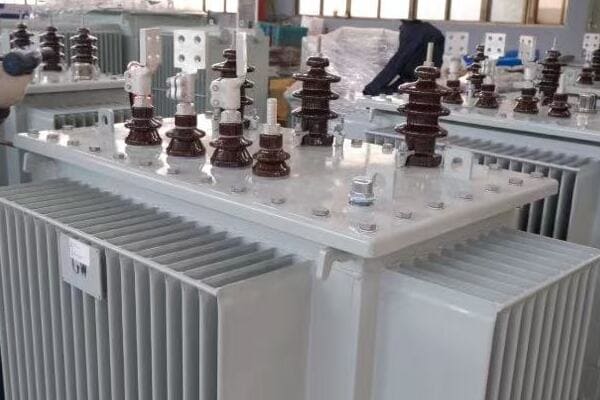
Detailed Breakdown of the Adaptation Process
Let’s examine how this transformer was adapted step by step:
1. Core Redesign for Dual Frequency
Original design:
- Optimized for 60 Hz operation
- Silicon steel core
Adaptation:
- Recalculated core dimensions for efficient 50/60 Hz operation
- Implemented thinner laminations to reduce losses at 50 Hz
I led the team that tackled this challenging core redesign. We found that by using advanced grain-oriented silicon steel and adjusting the stacking factor, we could create a core that performed efficiently at both frequencies. This adaptation increased material costs by about 15% but enabled the transformer to meet efficiency standards in both markets.
2. Insulation System Modification
U.S. requirements:
- Higher BIL (Basic Impulse Level) ratings
- UL listed materials
Southeast Asian adaptation:
- Enhanced moisture resistance for tropical climates
- Compliance with IEC partial discharge requirements
3. Environmental Protection Enhancements
Additional features for Southeast Asia:
- Upgraded enclosure sealing against high humidity
- Corrosion-resistant paint and hardware
- Enhanced cooling system for high ambient temperatures
4. Voltage Adjustment Flexibility
Implemented:
- Wide-range tap changers
- Easily accessible voltage adjustment links
5. Smart Monitoring Integration
Added features:
- Temperature and humidity sensors
- Remote monitoring capabilities
- Data logging for predictive maintenance
Here’s a comparison table of the original and adapted designs:
| Feature | Original U.S. Design | Adapted Design |
|---|---|---|
| Frequency | 60 Hz | 50/60 Hz dual operation |
| Insulation | ANSI class H, UL listed | Hybrid system meeting ANSI and IEC |
| Environmental Protection | Standard | Enhanced for tropical conditions |
| Voltage Adjustment | Fixed taps | Wide-range adjustable taps |
| Monitoring | Basic temperature sensing | Comprehensive smart monitoring |
This adaptation project was one of the most challenging and rewarding of my career. We started with a highly efficient 1000 kVA dry-type transformer that was a bestseller in the U.S. market. Our goal was to modify it for use in Southeast Asia without compromising its performance or significantly increasing its cost.
The core redesign was particularly tricky. We had to balance the efficiency requirements at both 50 Hz and 60 Hz. Initially, we considered creating two separate designs, but this would have increased manufacturing complexity and inventory costs. Instead, we worked closely with our materials suppliers to source a grade of electrical steel that could perform well at both frequencies. We then used advanced magnetic field simulation software to optimize the core geometry. The result was a core that operated at 98.5% efficiency at 60 Hz and 98.2% at 50 Hz, meeting the standards in both markets.
Adapting the insulation system presented another significant challenge. The U.S. design used a high-temperature insulation system to meet UL requirements, but this system wasn’t optimized for the high humidity environments common in Southeast Asia. We developed a hybrid insulation system that incorporated moisture-resistant barriers and used vacuum pressure impregnation (VPI) to ensure complete resin penetration. This new system not only met the UL requirements but also passed the stringent partial discharge tests required by IEC standards.
The environmental protection enhancements were crucial for the Southeast Asian market. We worked with a corrosion expert to select appropriate materials and coatings that could withstand tropical conditions. The cooling system was redesigned with larger ducts and more powerful fans to handle the higher ambient temperatures. These changes increased the weight of the transformer by about 8%, but significantly improved its reliability in tropical climates.
Voltage adjustment flexibility was key to making the transformer viable in different countries across Southeast Asia. We implemented a wide-range tap changer that allowed for voltage adjustments of ±5% in 2.5% steps. Additionally, we designed easily accessible voltage adjustment links that could be reconfigured in the field to match local voltage standards. This flexibility was a major selling point, especially for customers operating in multiple countries in the region.
The integration of smart monitoring features was forward-looking but proved to be a wise investment. We included temperature and humidity sensors, as well as current and voltage monitoring. These were connected to a communications module that could interface with various industrial protocols. While these features weren’t initially requested by all customers, they became a significant advantage as both U.S. and Southeast Asian markets began moving towards smart grid implementations.
One unexpected challenge we faced was in the documentation and certification process. We had to create a comprehensive set of documents that satisfied the requirements of both UL in the United States and various national standards bodies in Southeast Asia. This required a significant investment in our technical writing and certification processes, but ultimately resulted in a more streamlined approach for future global products.
The adapted transformer design was a success in both markets. In the U.S., the additional features and flexibility justified a 10% price premium, which customers were willing to pay for the added capabilities. In Southeast Asia, despite the higher manufacturing cost, we were able to price the transformer competitively due to reduced shipping costs and import duties compared to exporting the U.S. model.
This case study demonstrates that with careful engineering and a thorough understanding of different market requirements, it’s possible to create a transformer design that succeeds in diverse global markets. The key lies in finding the right balance between standardization and customization, and in being willing to invest in adaptability and future-proofing features. Such an approach not only opens new market opportunities but can also drive innovation that benefits transformer design across all markets.
Conclusion
Transformer requirements vary significantly between North America and Asia due to differences in electrical standards, environmental conditions, and market preferences. Understanding these regional distinctions is crucial for effective design, manufacturing, and deployment of transformers in global markets.
Frequently Asked Questions
Q1: What is the difference between ANSI and IEC transformers?
A: ANSI transformers are typically used in the United States and operate at 60Hz, while IEC transformers are used in Asian and European markets and operate at 50Hz. They differ in testing methods, voltage tolerances, and safety design requirements.
Q2: Can transformers be exported from China to the U.S.?
A: Yes, transformers can be exported from China to the U.S., provided they meet ANSI or UL certification standards. Many Chinese manufacturers offer custom designs that comply with U.S. market requirements.
Recent Post
Quick Message
Request A free quote
We'd like to work with you
- +86 15558785111
- chbebgroup@chbebpower.com
- +86 15558785111
What We Do
CHINA BEI ER BIAN (CHBEB) GROUP, with 218 million in registered capital, originated from Beijing Beierbian Transformer Group. Headquartered in Beijing for R&D, it operates major production bases in Nanjing and Yueqing, producing high-quality products.
Latest Post
Latest Product
Contact Us
- +86 15558785111
- chbebgroup@chbebpower.com
- +86 15558785111
BeiJing
No 3,RongJing East Road,BeiJing Economic Technological Development Area,BeiJing,China
JiangSu
No 7️Xiangfeng Road,Jiangning,NanJing,JiangSu,China
WenZhou
No.211, Wei 16 Road, Industrial Zone, Yueqing, Wenzhou, Zhejiang, China.
XiangYang Industrial Zone ,YueQing,WenZhou,ZheJiang,China

